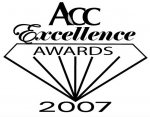Fossil Energy Study Guides and Activities
A Toolkit for Teachers and Parents
Thank you for considering fossil energy education in your classroom curriculum. The U.S. Department of Energy's Office of Fossil Energy is excited to present printable study guides and activities emphasizing the importance of coal, natural gas, and petroleum to our everyday lives. More importantly, we hope to familiarize students with the science and technologies that make using fossil fuels cleaner.
We hope you find our information useful. If you have any comments or suggestions regarding our educational materials, please contact us.
Elementary School
- Coal Study Guide [798KB PDF]: Focuses on the basics of coal, history of coal use, conversion of coal into electricity, and climate change concerns.
- How Much Does it Cost to Light Your Classroom? [31KB PDF]: A classroom activity that challenges students to compute the cost of electricity used to light their classroom and school for various lengths of time. They then compute the amount of coal needed to produce the electricity used in their classroom.
- Conserving Electric Energy [33KB PDF]: A classroom activity whereby students participate in two experiments in which they gain an appreciation for their dependency on electricity, and learn how regulating the rate of energy consumption makes the energy source last longer.
- Games and Puzzles:
Word Find (including answer key) [174KB PDF]
Crossword Puzzle (including answer key) [97KB PDF]
Middle School
- Coal Study Guide [781KB PDF]: Provides an age-appropriate discussion of the history of coal, how and where it is mined, and its uses. Presents a more detailed description of how scientists have been able to clean up coal using gasification and carbon sequestration technologies.
- Natural Gas Study Guide [257KB PDF]: Discusses the history of natural gas use, and how it is produced.
- Oil Study Guide [281KB PDF]: Explains where oil can be found underground, and the processes for bringing it to the surface.
- Online Energy Lessons: In this series of interactive energy lessons, students can learn about the history of fossil fuels and their future potential.
- Keystone Curriculum on Climate Change [opens new window]: The Keystone Center, in partnership with the Department of Energy and the National Energy Technology Laboratory, presents over 65 lessons developed to introduce middle and high school teachers and their students to the topic of climate change and to provide new ways of thinking about the problem and potential solutions.
|
|
 |
FE's educational information
was part of a larger collection
of outreach materials that won
the American Coal Council's
Excellence in Development
of Public Information Award
for 2007. | | High School
- Fossil Fuels Study Guide [68KB PDF]: A one-page primer explaining how coal, natural gas and petroleum were formed.
- Coal Study Guide [664KB PDF]: Provides broad overview of coal types, uses of coal, and coal mining. Provides more detailed discussion of the science behind coal gasification technology and carbon sequestration (particularly geologic carbon sequestration).
- Natural Gas Study Guide [419KB PDF]: Discusses natural gas drilling, uses, storage and delivery, and future sources of natural gas including methane hydrates and liquefied natural gas (LNG).
- Oil Study Guide [571KB PDF]: Explains oil drilling (primary and secondary recovery techniques), oil refining, offshore drilling, and the national Strategic Petroleum Reserve.
- Keystone Curriculum on Climate Change [opens new window]: The Keystone Center, in partnership with the Department of Energy and the National Energy Technology Laboratory, presents over 65 lessons developed to introduce middle and high school teachers and their students to the topic of climate change and to provide new ways of thinking about the problem and potential solutions.
- Build a Floating Oil Rig [1.7MB PDF]: The U.S. Department of the Interior's Minerals Management Service developed this teacher's guide about the many energy resources found in, over, and under the ocean. Includes sections on petroleum, natural gas, and methane hydrates. Hands-on activities include drilling for oil in the ocean, and building a floating oil rig.
- Learn About Petroleum Careers [opens new window]: The International Society of Petroleum Engineers developed this Web site to list the types of careers available within the petroleum industry - from geologist to energy economist.
|